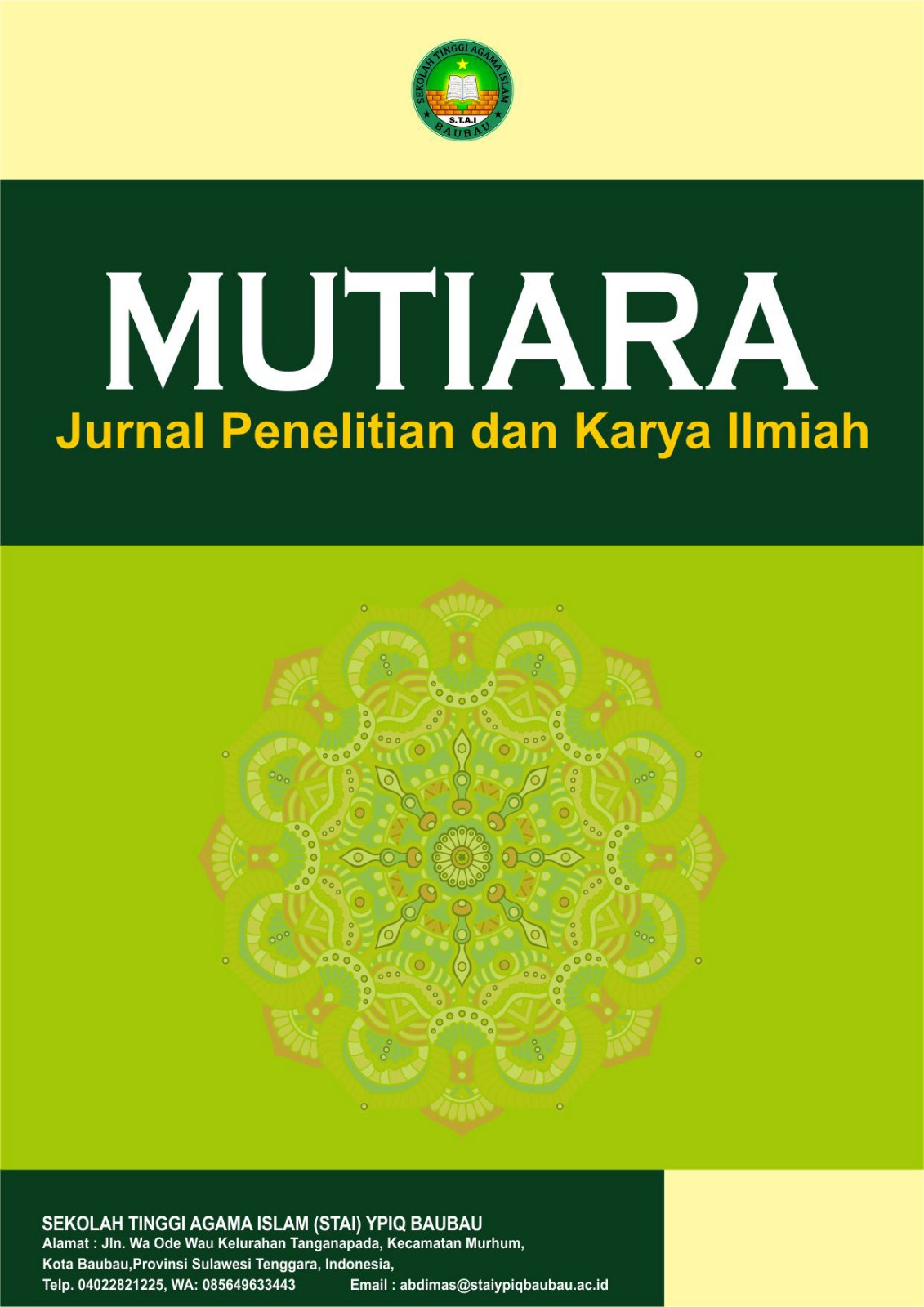Identifikasi dan Karakterisasi Strain Lactobacillus dan Khamir Asal Ragi Tape Singkong ( Manihot Utilissima) sebagai Agen Probiotik Baru
DOI:
https://doi.org/10.59059/mutiara.v3i4.2708Keywords:
Cassava tape, Lactobacillus strains, Microorganisms, Probiotics, YeastAbstract
Cassava tape is a traditional fermented food that is popular in Indonesia and is known to contain potential microorganisms such as Lactobacillus spp. and yeast. These microorganisms play a significant role in the fermentation process of cassava tape, which in turn contributes to the product's taste and texture. Moreover, these microbes have the potential to act as probiotics, supporting gut health. This study aims to identify and characterize Lactobacillus strains and yeast isolated from cassava tape yeast, as well as evaluate their probiotic potential. Isolation was carried out using selective media specifically formulated for isolating Lactobacillus and yeast. After isolation, identification was performed through morphological, biochemical, and molecular approaches. Molecular identification was carried out using the 16S rRNA gene for Lactobacillus, while the Internal Transcribed Spacer (ITS) gene was used for yeast. After identification, probiotic characterization was carried out through several tests, including resistance to low pH, bile salts, antimicrobial activity against pathogens, and microbial adhesion to intestinal surfaces. The results of the study showed that several isolates of Lactobacillus plantarum and yeast such as Saccharomyces cerevisiae exhibited good resistance to simulated gastrointestinal conditions, including resistance to low pH and bile salts. Furthermore, these microbes showed antagonistic activity against the pathogens Escherichia coli and Staphylococcus aureus, indicating their ability to inhibit the growth of pathogenic bacteria in the digestive tract. These findings suggest that microbial strains isolated from cassava tape yeast have the potential to be developed as new local probiotic candidates. Therefore, cassava tape not only serves as a delicious traditional fermented food but also can be utilized to support gut health, providing a safe and beneficial probiotic alternative for the community.
References
Ainillah, A., Yuliani, S., & Wahyuni, S. (2020). Isolasi dan karakterisasi khamir dari tape singkong sebagai kandidat probiotik. Jurnal Biologi Eksperimen dan Evolusi, 10(2), 99-105. https://jurnalonline.unsoed.ac.id/index.php/bioe/article/view/1745
Arief, I. I., Afriani, R., & Wulandari, M. (2019). Karakteristik lactic acid bacteria isolat tape singkong sebagai probiotik potensial. Jurnal Teknologi dan Industri Pangan, 30(1), 68-75. https://doi.org/10.6066/jtip.2019.30.1.68
Czerucka, D., Piche, T., & Rampal, P. (2007). Review article: Yeast as probiotics - Saccharomyces boulardii. Alimentary Pharmacology & Therapeutics, 26(6), 767-778. https://doi.org/10.1111/j.1365-2036.2007.03442.x
Departemen Yankes Kemenkes RI. (2023). Mengenal probiotik dan manfaatnya untuk tubuh. Diakses dari: https://yankes.kemkes.go.id/view_artikel/3520
FAO/WHO. (2002). Guidelines for the evaluation of probiotics in food. London: Food and Agriculture Organization of the United Nations and World Health Organization.
Ganapathiwar, S., & Bhukya, B. (2023). In vitro assessment for the probiotic potential of Pichia kudriavzevii. Bioinformation, 19(4), 441-444. https://www.bioinformation.net/019/97320630019441.htm
Greppi, A., Saubade, F., Botta, C., Humblot, C., Guyot, J. P., & Cocolin, L. (2017). Potential probiotic Pichia kudriavzevii strains and their ability to enhance folate content of traditional cereal-based African fermented food. Food Microbiology, 62, 169-177. https://pubmed.ncbi.nlm.nih.gov/27889145/
Helna, P., Parvathy, S., & Archana, C. (2024). Probiotic potential of Pichia kudriavzevii Y01 and preparation of fermented whey beverage by response surface methodology. The Journal of Research ANGRAU, 52(1), 103-112. https://doi.org/10.58537/jorangrau.2024.52.1.12
Hill, C., Guarner, F., Reid, G., Gibson, G. R., Merenstein, D. J., Pot, B., ... & Sanders, M. E. (2014). Expert consensus document: The International Scientific Association for Probiotics and Prebiotics consensus statement on the scope and appropriate use of the term probiotic. Nature Reviews Gastroenterology & Hepatology, 11(8), 506-514. https://doi.org/10.1038/nrgastro.2014.66
Kim, Y., Oh, S., & Kim, S. H. (2018). Review on probiotic bacteria isolated from kimchi and its health benefits. Food Science and Biotechnology, 27(4), 1-10. https://doi.org/10.1007/s10068-018-0332-9
Lv, X., Liang, H., Li, L., & Wang, Y. (2020). Characterization and probiotic potential of Lactobacillus plantarum strains isolated from traditional Chinese fermented food. Food Science & Nutrition, 8(5), 2377-2386. https://doi.org/10.1002/fsn3.1480
Nugroho, H., & Wahyuni, R. (2020). Sinbiotik yogurt dari Lactobacillus acidophilus dan inulin meningkatkan respons imun pada tikus yang terinfeksi Escherichia coli. Biota: Jurnal Ilmiah Ilmu-Ilmu Hayati, 16(1), 10-18. https://ojs.uajy.ac.id/index.php/biota/article/view/134
Nuraida, L. (2015). A review: Health promoting lactic acid bacteria in traditional Indonesian fermented foods. Food Science and Human Wellness, 4(2), 47-55. https://doi.org/10.1016/j.fshw.2015.06.001
Pangastuti, A., & Kuswytasari, N. D. (2019). Probiotic properties of yeasts isolated from fermented cassava (tape). IOP Conference Series: Earth and Environmental Science, 230, 012077.
Rahayu, E. S., & Utami, T. (2014). Bakteri asam laktat: Potensi dan aplikasinya dalam produk fermentasi lokal. Prosiding Seminar Nasional Teknologi Peternakan Dan Veteriner, 99-107. http://repository.ipb.ac.id/handle/123456789/92788
Sanders, M. E., Merenstein, D. J., Reid, G., Gibson, G. R., & Rastall, R. A. (2019). Probiotics and prebiotics in intestinal health and disease: From biology to the clinic. Nature Reviews Gastroenterology & Hepatology, 16(10), 605-616. https://doi.org/10.1038/s41575-019-0173-3
Sari, N. L., Madyawati, S., & Huda, N. (2021). Pengaruh pemberian probiotik Lactobacillus acidophilus terhadap aktivitas fagositosis makrofag tikus putih. Jurnal Kedokteran Brawijaya, 33(3), 185-190. https://jkb.ub.ac.id/index.php/jkb/article/view/288
Simanjuntak, M., Dizon, I. E., & Migo, V. P. (2021). Characterization of lactic acid bacteria isolated from cassava fermentation for potential probiotic application. Philippine Journal of Science, 150(2), 411-421.
Staniszewski, A., & Kordowska-Wiater, M. (2021). Probiotic yeasts and how to find them—from spoilage to probiotic. Applied Sciences, 14(24), 11698. https://doi.org/10.3390/app142411698
Wulandari, L. D., & Widyastuti, Y. (2022). Isolasi dan karakterisasi khamir dari tape singkong sebagai kandidat probiotik. Jurnal Teknologi Pangan dan Kesehatan, 4(2), 99-105. https://ejournal.upnjatim.ac.id/index.php/teknologipangan/article/view/3547
Zheng, J., Wittouck, S., Salvetti, E., Franz, C. M. A. P., Harris, H. M. B., Mattarelli, P., ... & Lebeer, S. (2020). A taxonomic note on the genus Lactobacillus: Description of 23 novel genera, emended description of the genus Lactobacillus Beijerinck 1901, and union of Lactobacillaceae and Leuconostocaceae. International Journal of Systematic and Evolutionary Microbiology, 70(4), 2782-2858. https://doi.org/10.1099/ijsem.0.004107
Downloads
Published
How to Cite
Issue
Section
License
Copyright (c) 2025 Mutiara : Jurnal Penelitian dan Karya Ilmiah

This work is licensed under a Creative Commons Attribution-ShareAlike 4.0 International License.








